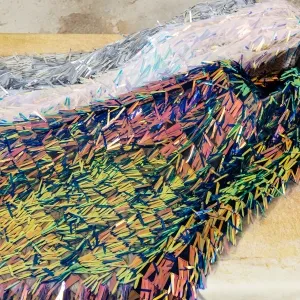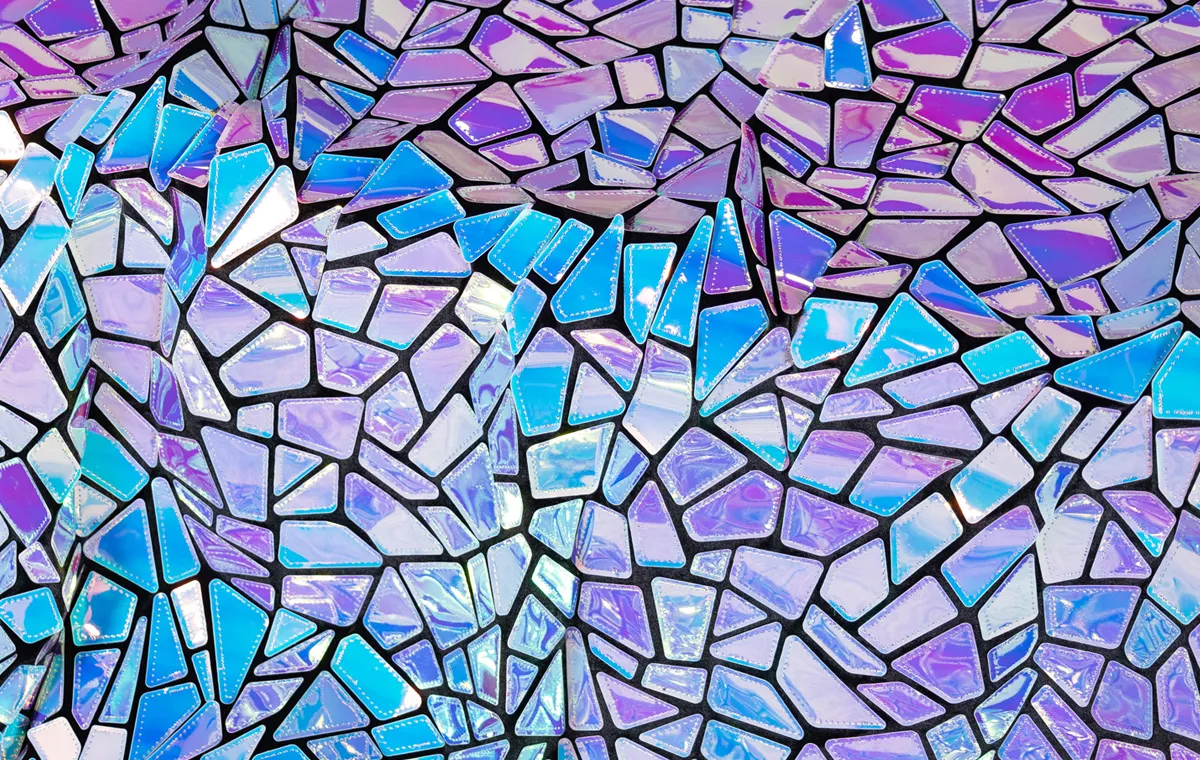Sequin fabric is the peacock of the fabric world. So pretty, so flashy and so hard to resist. Sewing with sequin fabric can be a rewarding yet challenging endeavor. The allure of the shimmering, eye-catching sequins adds a touch of glamour and sophistication to any garment or project. However, the reflective and delicate nature of sequins requires some special handling and techniques. Whether you're a seasoned sewer or a novice, here are some must-read tips and tricks to ensure your sewing experience with sequin fabric is a smooth and successful one.
Step 1: Gather Your Supplies
Before you start working with sequined fabric, gather all the necessary supplies to make the process smoother:
- Sequined fabric of your choice
- Fine and sharp needles (size 9/65 or 11/75)
- Polyester or nylon thread in a matching color
- Small, sharp scissors or a rotary cutter with a new blade
- Pins
- Soft cloth or muslin for protection
- Sewing machine (optional)
- Lining or interfacing (optional)
Step 2: Prepare Your Workspace
Set up a clean, flat workspace with adequate lighting. Lay a soft cloth or a piece of muslin on your work surface to prevent sequins from scratching or snagging. Ensure you have enough space to handle the fabric without it hanging off the edge. Place a drop cloth underneath the area where you are cutting the sequin fabric.
Step 3: Handling and Cutting Sequined Fabric
Before you begin cutting your sequin fabric, consider the direction of the sequins. Some sequin fabrics have one-way sequins, which means they lay flat in one direction and appear different when flipped. Take this into account when laying out your pattern pieces to ensure all the sequins align correctly on the final garment.
Step 4: Pinning the Fabric
To avoid damaging the sequins, pin within the seam allowance or along the fabric's edges, securing the sequined fabric to the lining or interfacing if you're using any. Take extra care not to pin directly through the sequins to prevent breakage.
Step 5: Choosing the Right Sewing Technique
Depending on your preference and the intricacy of your project, choose between hand sewing and machine sewing. Hand sewing provides greater control and precision, especially when dealing with delicate sequined fabric. However, machine sewing can be more time-efficient for larger projects.
Step 6: Hand Sewing Techniques
When hand sewing sequined fabric, use small and discreet stitches to avoid detracting from the overall look. Start with a knot at the end of the thread and insert the needle through the wrong side of the fabric, bringing it up through the seam allowance. Continue sewing, making sure the sequins lie flat.
Step 7: Machine Sewing Techniques
For machine sewing, select a longer stitch length to reduce the number of needle penetrations through the sequins. Sew slowly and carefully, ensuring the sequins lay flat and do not get caught in the presser foot. Backstitch at the beginning and end of each seam for added security.
Step 8: Finishing the Seams
To create a polished finish, consider various seam finishing techniques:
- Overlocking: Use an overlocker (serger) to encase the raw edges of the seams and prevent fraying.
- French Seams: Sew two seams to encase the raw edges within the seam itself, providing a clean look on both sides.
Step 9: Handling Embellishments
If your sequined fabric features additional embellishments like beads or rhinestones, take extra care when sewing around them. Hand-stitching might be the best option for these areas to avoid damage.
Step 10: Pressing
Use caution when pressing sequined fabric. Place a pressing cloth or a piece of muslin over the sequins before ironing, using a low heat setting to avoid melting or damaging the embellishments.
With these essential tips and tricks, you're well-equipped to embark on a successful sewing adventure with sequin fabric. Embrace the shimmer and shine as you create dazzling garments and accessories that will leave a lasting impression. Happy sewing!

 Best
Best  New
New  Featured
Featured  Featured
Featured 


































